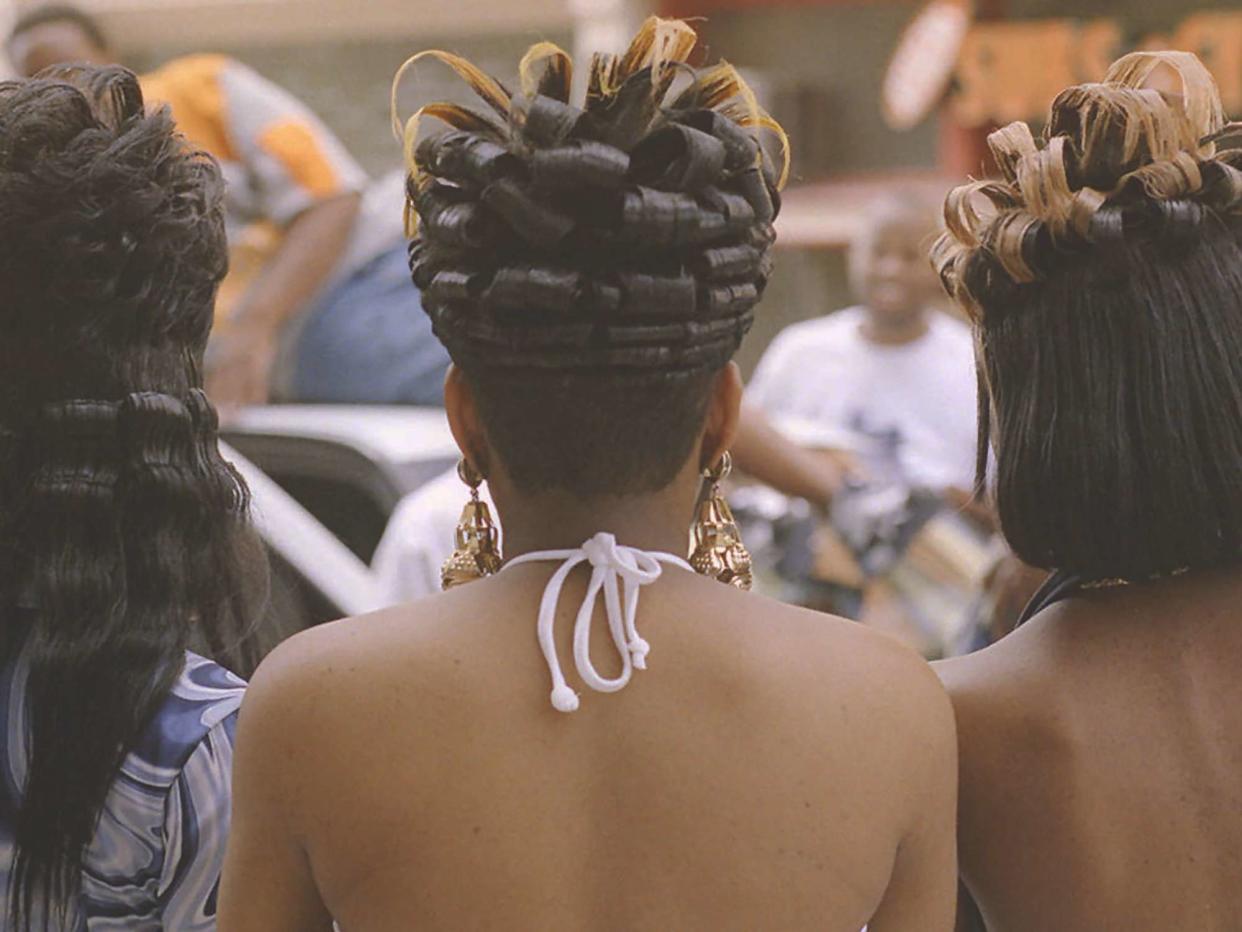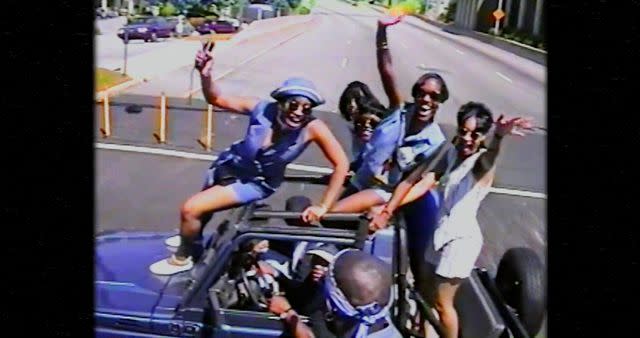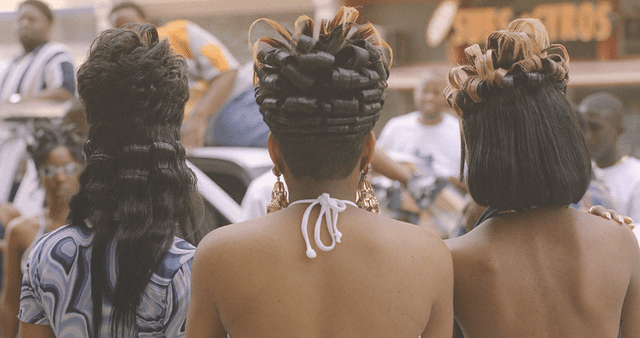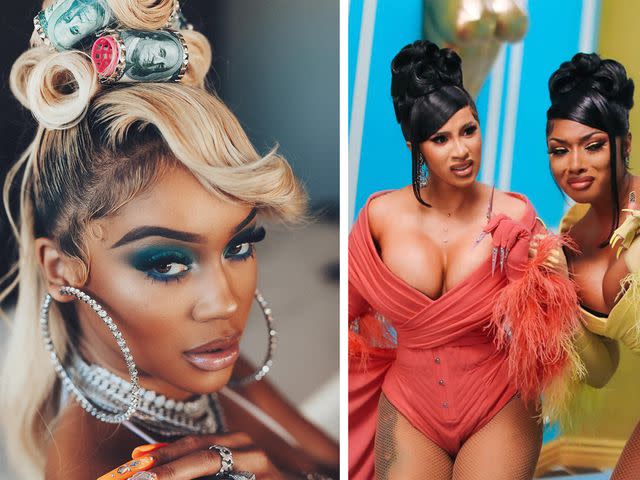Freaknik Beauty Showcased Black Joy and Creativity—And Now It's Getting Its Due

Courtesy of Hulu
- Oops!Something went wrong.Please try again later.
Before the baddies popped out, the hoochies had their way—and now, Hulu is helping to tell their story. Freaknik: The Wildest Party Never Told revisits the music, fashion, and beauty of the infamous annual street party. The hair, makeup, and nail looks seen in the documentary represent an iconic style blueprint that has stood the test of time—one that can be seen today in everything from the brown lip liner looks dominating the social feeds to the opulent manicures worn by celebrities like Cardi B and Megan Thee Stallion. "Freaknik had a huge cultural impact in the beauty space," says supervising producer Deshawn Plair.

Courtesy of Hulu
Freaknik was an annual picnic established by HBCU students in the 1980s who were not heading home or traveling for spring break. (The colorful name is a portmanteau of the words "freak" and "picnic.") By the 1990s, Freaknik had evolved into an explosive celebration of all things young, Black, and carefree. "The hair, the fashion, and the makeup was on point," says Atlanta-based hairstylist Keka Heron, who attended Freaknik as a student at Clark Atlanta University in 1995 and 1996. "It was a time of no social media, no full internet access, and the freedom to have pure fun."
Eventually, the gatherings became so large that they attracted students from around the country. Even non-students wanted to participate in the rowdy collegiate shenanigans. These young people were often unwelcome at spring break gatherings in other cities. Atlanta, a haven for upwardly mobile young Black professionals, athletes, and academics, was a perceived safe space. The event also attracted celebrities as performers and participants. Usher, Tupac, and more came through.
Still, Freaknik was not without its detractors. What was considered harmless, MTV Spring Break-style fun by some was considered disgraceful by others. Lil' Kim immortalized the affair in the 1996 song "Crush on You," during which she quips, "You want a cheap chick/ better go down to Freaknik." By the year 2000, local authorities and government officials were finally successful in their efforts to shut Freaknik down for good.

Courtesy of Hulu
Freaknik's approach to beauty was the bolder, the better. You wanted to stand out in a sea of women showing off and showing out. Rhinestones, tooth gems, and logomania reigned supreme. The brows were skinny and the "bay-angs" were fat.
Attendees added globs of thick dark gel and spritzed strong alcohol sprays to transform their manes into magic. Some of the brands Freaknik kids turned to for self-expression are still around today: Horsley recalls seeing stylists use Pro-Styl and African Pride gels and Pump It Up! Gold to achieve "that extra hold." Of the latter, Plair says, "You had it in your bag ready to go at any moment to make sure your hair stayed fried and laid to the side." A limp 'do was unacceptable for twerking on car hoods and hotel balconies. "You did not want your hair to fall," she says.
Of the hairstyles, "the pin-curl ponytail was a show stopper, especially with gelled swoop bangs," says Leatha Morgan, another Atlanta-based hairstylist. "Ladies had a creative edge back then, everyone wanted to wear a style and make it their own." Celebrity hairstylist Brandon Horsley recalls being inspired by seeing the styles from the period on his mother. "The technique, the skill level back then was unmatched," he says. But it wasn't just femme attendees: "Fellas wanted to make an impression too with the haircuts that included box braids, hi-top fades, and, of course, the classic cornrows," she adds.
Unlike today, the young people attending Freaknik couldn't log onto IG or scroll TikTok to find out what was hot in other cities. So trends from every corner of the country showed up at the festivities; Plair calls it a "breeding ground" for styles. "Everybody got a chance to see 'Oh this, what they're doing in the Midwest, this is what they're doing out West, [this is] what they're doing up North or on the East Coast,'" she says. "It was just a great opportunity to kind of see those different fashions."

@saweetie / @iamcardib / Instagram
Plair points to the hair worn by Megan Thee Stallion and Cardi B in the "WAP" video as evidence of the lasting impact of Freaknik beauty. "The girls were rocking that in the late '80s and early '90s," she says.
"The hairstyles were not only popular then but today," adds Morgan, who credits the comeback to creative hairstylists and barbers. Saweetie had a Freanik-themed birthday party in 2021; The City Girls, Karruche Tran, Chloe Bailey, and more rocked vintage updos for the affair. 21 Savage, an executive producer on the documentary, also had a Freaknik-themed birthday party in 2022, where stars like Latto wore the mushroom cuts and swooped bangs that Freaknik made iconic.
Plair stresses the importance of giving Black women their flowers for setting trends at Freaknik—and being mindful of the fine line between inspiration and appropriation. "We know that you guys are celebrating," she says. "You love this and might be doing your own version, but this is where it stems from." She points to how many in the media have written about uneven bangs as if they are a new style: "You'll see uneven bangs in this freaking documentary, and this is in the late '80s, early '90s, and people are saying, 'Oh, like, I just came up with that.' No, you didn't come up with it," she laments. "People have been doing this since back in the day."
Freaknik: The Wildest Party Never Told is now streaming on Hulu.
Read the original article on Byrdie.

